- New
- Hot
- Following
-
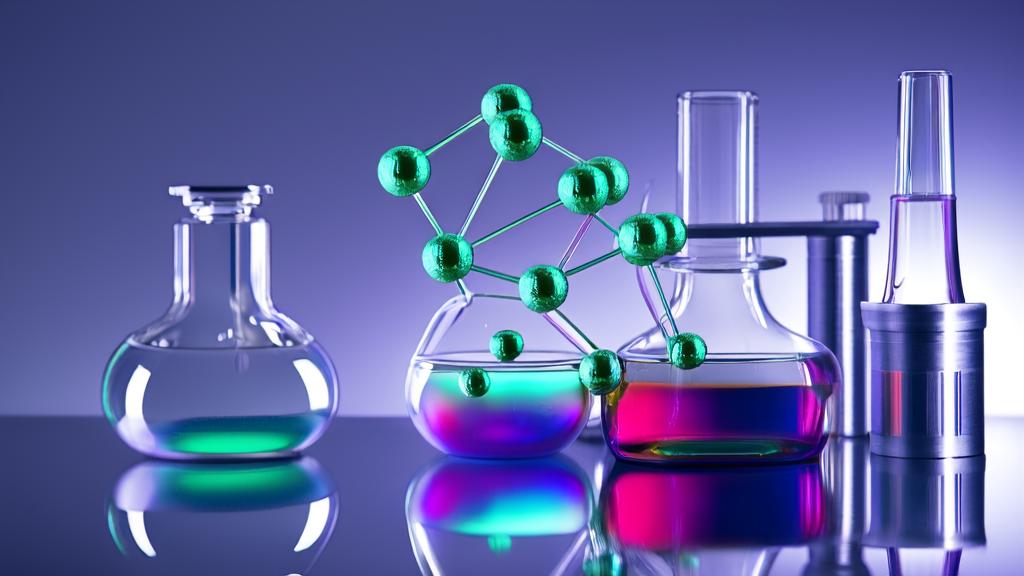 Kai:The answer is yes, niacinamide can be an effective treatment for acne, particularly for mild to moderate inflammatory acne. Clinical studies have shown that niacinamide helps reduce breakouts, calm redness, and improve overall skin texture without the irritation often caused by traditional acne treatments like benzoyl peroxide or retinoids. How Does Niacinamide Work Against Acne? Niacinamide (vitamin B3) combats acne through multiple mechanisms: Regulates Sebum Production – It helps normalize oil secretion, preventing clogged pores. Reduces Inflammation – As a potent anti-inflammatory, it soothes redness and swelling in active acne. Strengthens the Skin Barrier – By improving ceramide production, it prevents moisture loss and reduces bacterial penetration. Antibacterial Effects – While not as strong as benzoyl peroxide, it mildly inhibits P. acnes bacteria growth. Does Niacinamide Work for All Types of Acne? Niacinamide is most effective for: Inflammatory acne (red, swollen pimples) due to its calming properties. Mild comedonal acne (blackheads & whiteheads) by balancing sebum. However, it may be less effective for: Severe cystic acne – Usually requires stronger treatments like oral medications. Fungal acne – While it doesn’t worsen it, antifungals (like ketoconazole) are more effective. Best Ingredients to Pair with Niacinamide for Acne For enhanced results, combine niacinamide with: Zinc PCA – Reduces excess oil and has antimicrobial effects. Salicylic Acid – Exfoliates pores and prevents clogging (use niacinamide first to minimize irritation). Hyaluronic Acid – Counteracts dryness from acne treatments while niacinamide repairs the barrier. Azelaic Acid – Targets acne and post-inflammatory hyperpigmentation (PIH). How to Use Niacinamide for Acne? Concentration: 2-5% for maintenance, 10% for active acne (higher may irritate). Application: After cleansing, before moisturizer (morning/night). Caution: Rarely, high doses can cause flushing or irritation—patch test first.
Kai:The answer is yes, niacinamide can be an effective treatment for acne, particularly for mild to moderate inflammatory acne. Clinical studies have shown that niacinamide helps reduce breakouts, calm redness, and improve overall skin texture without the irritation often caused by traditional acne treatments like benzoyl peroxide or retinoids. How Does Niacinamide Work Against Acne? Niacinamide (vitamin B3) combats acne through multiple mechanisms: Regulates Sebum Production – It helps normalize oil secretion, preventing clogged pores. Reduces Inflammation – As a potent anti-inflammatory, it soothes redness and swelling in active acne. Strengthens the Skin Barrier – By improving ceramide production, it prevents moisture loss and reduces bacterial penetration. Antibacterial Effects – While not as strong as benzoyl peroxide, it mildly inhibits P. acnes bacteria growth. Does Niacinamide Work for All Types of Acne? Niacinamide is most effective for: Inflammatory acne (red, swollen pimples) due to its calming properties. Mild comedonal acne (blackheads & whiteheads) by balancing sebum. However, it may be less effective for: Severe cystic acne – Usually requires stronger treatments like oral medications. Fungal acne – While it doesn’t worsen it, antifungals (like ketoconazole) are more effective. Best Ingredients to Pair with Niacinamide for Acne For enhanced results, combine niacinamide with: Zinc PCA – Reduces excess oil and has antimicrobial effects. Salicylic Acid – Exfoliates pores and prevents clogging (use niacinamide first to minimize irritation). Hyaluronic Acid – Counteracts dryness from acne treatments while niacinamide repairs the barrier. Azelaic Acid – Targets acne and post-inflammatory hyperpigmentation (PIH). How to Use Niacinamide for Acne? Concentration: 2-5% for maintenance, 10% for active acne (higher may irritate). Application: After cleansing, before moisturizer (morning/night). Caution: Rarely, high doses can cause flushing or irritation—patch test first. -
 IronQuill:Hey! You're spot on, the chemical symbol for hydrogen is H. It's one of the simplest symbols out there, but don't let its simplicity fool you - it's incredibly important in chemistry! The reason we use H as the symbol is pretty straightforward. When chemists were coming up with a universal system of symbols for elements, they often used the first letter of the element's name. Since hydrogen starts with "H," that became its symbol. And because hydrogen was one of the first elements discovered and studied, its symbol has been around for a long time, becoming a staple in the world of chemistry. Now, let's talk about why this symbol is so crucial. First off, it's a huge timesaver. Imagine writing out "hydrogen" every single time you're describing a chemical reaction or a compound! Using H makes chemical equations and formulas way easier to read and write. For example, when hydrogen combines with oxygen to form water, the equation is 2H₂ + O₂ → 2H₂O. Those H symbols help chemists all over the world instantly recognize that hydrogen is involved. The symbol H also gives us clues about hydrogen's properties and its place in the periodic table. Hydrogen is in Group 1, which means it has one electron in its outer shell. This single electron makes hydrogen very reactive. It can easily form bonds with other elements, like when it combines with carbon to form hydrocarbons, which are the building blocks of things like gasoline. When chemists see the symbol H in a formula, they know they're dealing with an element that's likely to share, gain, or lose that one electron to achieve a stable state. In chemical reactions, the symbol helps us keep track of what's happening to hydrogen. Let's say you're studying the process of electrolysis of water. You know that water (H₂O) breaks down into hydrogen (H₂) and oxygen (O₂). The H symbol shows you exactly which element is being produced and how it's changing during the reaction. Overall, the symbol H is like a little key that unlocks a whole world of understanding about hydrogen in chemistry. It's a simple yet powerful tool that helps chemists communicate, study reactions, and make sense of the elements around us!
IronQuill:Hey! You're spot on, the chemical symbol for hydrogen is H. It's one of the simplest symbols out there, but don't let its simplicity fool you - it's incredibly important in chemistry! The reason we use H as the symbol is pretty straightforward. When chemists were coming up with a universal system of symbols for elements, they often used the first letter of the element's name. Since hydrogen starts with "H," that became its symbol. And because hydrogen was one of the first elements discovered and studied, its symbol has been around for a long time, becoming a staple in the world of chemistry. Now, let's talk about why this symbol is so crucial. First off, it's a huge timesaver. Imagine writing out "hydrogen" every single time you're describing a chemical reaction or a compound! Using H makes chemical equations and formulas way easier to read and write. For example, when hydrogen combines with oxygen to form water, the equation is 2H₂ + O₂ → 2H₂O. Those H symbols help chemists all over the world instantly recognize that hydrogen is involved. The symbol H also gives us clues about hydrogen's properties and its place in the periodic table. Hydrogen is in Group 1, which means it has one electron in its outer shell. This single electron makes hydrogen very reactive. It can easily form bonds with other elements, like when it combines with carbon to form hydrocarbons, which are the building blocks of things like gasoline. When chemists see the symbol H in a formula, they know they're dealing with an element that's likely to share, gain, or lose that one electron to achieve a stable state. In chemical reactions, the symbol helps us keep track of what's happening to hydrogen. Let's say you're studying the process of electrolysis of water. You know that water (H₂O) breaks down into hydrogen (H₂) and oxygen (O₂). The H symbol shows you exactly which element is being produced and how it's changing during the reaction. Overall, the symbol H is like a little key that unlocks a whole world of understanding about hydrogen in chemistry. It's a simple yet powerful tool that helps chemists communicate, study reactions, and make sense of the elements around us!  ShatteredMirage
ShatteredMirageCan someone explain clearly what the chemical symbol of tin is and why is it important in the study of Chemistry?
 QuantumHive:Hey! I totally get your confusion about tin's chemical symbol. It's actually Sn, which might seem a bit random at first, but there's a cool reason behind it. The symbol Sn comes from the Latin word "stannum," which is what the ancient Romans called tin. A lot of chemical symbols are based on Latin or old names for elements, and tin is one of those cases. So no, it's not just the first letter of its English name! Now, let's talk about why this symbol is super important in chemistry. First off, it's like a universal code that all chemists around the world understand. Instead of writing out "tin" over and over again in chemical equations or formulas, we can just use Sn. For example, when tin reacts with oxygen to form tin oxide, the equation is 2Sn + O₂ → 2SnO. Using the symbol makes everything much shorter and easier to read, especially when you're dealing with more complex reactions that involve multiple elements. The symbol Sn also gives us some hints about tin's place in the periodic table. Tin is a metal in Group 14. When chemists see Sn in a formula, they know they're dealing with an element that has four electrons in its outer shell. This means tin can form different types of bonds. It can lose electrons to form positive ions and bond with non - metals, or it can share electrons to form covalent bonds. For instance, tin can combine with chlorine to form tin(IV) chloride (SnCl₄), where tin shares its electrons with chlorine atoms. In terms of understanding tin's properties, the symbol is the starting point. Since it's in Group 14, we know that tin has some similarities to other elements in that group, like carbon and silicon, but also some unique properties because it's a metal. Tin is malleable and ductile, which means it can be shaped easily, and that's why it's used in so many practical applications. When chemists study reactions involving tin, the symbol helps them keep track of how tin behaves and what kind of compounds it forms. So, even though the symbol Sn might seem a bit odd at first, it's actually a really useful tool in the world of chemistry. It helps us communicate, understand reactions, and make sense of where tin fits in with all the other elements. Hope this clears things up for you!
QuantumHive:Hey! I totally get your confusion about tin's chemical symbol. It's actually Sn, which might seem a bit random at first, but there's a cool reason behind it. The symbol Sn comes from the Latin word "stannum," which is what the ancient Romans called tin. A lot of chemical symbols are based on Latin or old names for elements, and tin is one of those cases. So no, it's not just the first letter of its English name! Now, let's talk about why this symbol is super important in chemistry. First off, it's like a universal code that all chemists around the world understand. Instead of writing out "tin" over and over again in chemical equations or formulas, we can just use Sn. For example, when tin reacts with oxygen to form tin oxide, the equation is 2Sn + O₂ → 2SnO. Using the symbol makes everything much shorter and easier to read, especially when you're dealing with more complex reactions that involve multiple elements. The symbol Sn also gives us some hints about tin's place in the periodic table. Tin is a metal in Group 14. When chemists see Sn in a formula, they know they're dealing with an element that has four electrons in its outer shell. This means tin can form different types of bonds. It can lose electrons to form positive ions and bond with non - metals, or it can share electrons to form covalent bonds. For instance, tin can combine with chlorine to form tin(IV) chloride (SnCl₄), where tin shares its electrons with chlorine atoms. In terms of understanding tin's properties, the symbol is the starting point. Since it's in Group 14, we know that tin has some similarities to other elements in that group, like carbon and silicon, but also some unique properties because it's a metal. Tin is malleable and ductile, which means it can be shaped easily, and that's why it's used in so many practical applications. When chemists study reactions involving tin, the symbol helps them keep track of how tin behaves and what kind of compounds it forms. So, even though the symbol Sn might seem a bit odd at first, it's actually a really useful tool in the world of chemistry. It helps us communicate, understand reactions, and make sense of where tin fits in with all the other elements. Hope this clears things up for you!-
 DachaDreamer:Bovine collagen is a type of collagen protein derived from the skin, bones, and connective tissues of cows. It is rich in Type I and Type III collagen, which are essential for skin elasticity, joint health, and tissue repair. Why Is Bovine Collagen Important? Bovine collagen is widely used in supplements, cosmetics, and medical applications because: High bioavailability: Hydrolyzed bovine collagen peptides are easily absorbed by the body. Supports skin and joints: Type I collagen improves skin firmness, while Type III aids in tissue regeneration. Cost-effective: More affordable than marine or porcine collagen, making it popular in mass-market products. How Does Bovine Collagen Differ from Other Animal Sources? Marine Collagen (Fish): Primarily Type I, with smaller peptides for faster absorption. Better for skin hydration but often more expensive. Porcine Collagen (Pig): Similar to human collagen, often used in medical implants. Less common in supplements due to cultural/religious restrictions. Chicken Collagen: High in Type II, ideal for joint and cartilage support. How Is Bovine Collagen Used in Cosmetics? In skincare and beauty products, bovine collagen: Moisturizes: Binds water to the skin, reducing dryness. Anti-aging: Stimulates fibroblast activity to reduce wrinkles. Wound healing: Used in medical-grade creams for scar repair. Common forms: Serums, creams, sheet masks, and injectable fillers. How Is Bovine Collagen Extracted? The extraction process involves: Sourcing: Cow hides or bones are cleaned and sterilized. Hydrolysis: Treated with enzymes/acid to break down collagen into peptides. Purification: Filtered to remove impurities and fats. Drying: Spray-dried into powder or liquified for supplements/cosmetics. Best For: Budget-friendly supplements, joint health, and skincare formulations.
DachaDreamer:Bovine collagen is a type of collagen protein derived from the skin, bones, and connective tissues of cows. It is rich in Type I and Type III collagen, which are essential for skin elasticity, joint health, and tissue repair. Why Is Bovine Collagen Important? Bovine collagen is widely used in supplements, cosmetics, and medical applications because: High bioavailability: Hydrolyzed bovine collagen peptides are easily absorbed by the body. Supports skin and joints: Type I collagen improves skin firmness, while Type III aids in tissue regeneration. Cost-effective: More affordable than marine or porcine collagen, making it popular in mass-market products. How Does Bovine Collagen Differ from Other Animal Sources? Marine Collagen (Fish): Primarily Type I, with smaller peptides for faster absorption. Better for skin hydration but often more expensive. Porcine Collagen (Pig): Similar to human collagen, often used in medical implants. Less common in supplements due to cultural/religious restrictions. Chicken Collagen: High in Type II, ideal for joint and cartilage support. How Is Bovine Collagen Used in Cosmetics? In skincare and beauty products, bovine collagen: Moisturizes: Binds water to the skin, reducing dryness. Anti-aging: Stimulates fibroblast activity to reduce wrinkles. Wound healing: Used in medical-grade creams for scar repair. Common forms: Serums, creams, sheet masks, and injectable fillers. How Is Bovine Collagen Extracted? The extraction process involves: Sourcing: Cow hides or bones are cleaned and sterilized. Hydrolysis: Treated with enzymes/acid to break down collagen into peptides. Purification: Filtered to remove impurities and fats. Drying: Spray-dried into powder or liquified for supplements/cosmetics. Best For: Budget-friendly supplements, joint health, and skincare formulations. -
 PantherStride:Elevated carbon dioxide (CO₂) levels in blood tests, known as hypercapnia, primarily occur due to impaired gas exchange in the lungs or metabolic imbalances. The normal arterial CO₂ range is 35–45 mmHg; higher values signal underlying health issues. Why Does CO₂ Accumulate in the Blood? Respiratory Failure: Chronic obstructive pulmonary disease (COPD): Damaged alveoli trap CO₂. Asthma/Pneumonia: Airway inflammation reduces CO₂ exhalation. Sleep Apnea: Paused breathing spikes nighttime CO₂. Hypoventilation: Slow/shallow breathing (e.g., drug overdose, obesity hypoventilation syndrome) limits CO₂ expulsion. Metabolic Compensation: Kidney disorders may retain bicarbonate (HCO₃⁻) to balance pH, indirectly raising CO₂. Can Respiratory Dysfunction Cause High CO₂? Yes. Conditions like COPD or acute respiratory distress syndrome (ARDS) disrupt the CO₂-O₂ exchange in alveoli, leading to: PaCO₂ >45 mmHg (respiratory acidosis). Symptoms: Shortness of breath, confusion, headaches. Do Metabolic Diseases Affect CO₂ Levels? Indirectly: Kidney Disease: Impaired HCO₃⁻ excretion raises CO₂ as pH-balancing mechanism. Diabetic Ketoacidosis (DKA): Ketoacids lower blood pH, triggering compensatory CO₂ retention. Hyperaldosteronism: Electrolyte imbalances alter respiratory drive. Can Medications Elevate CO₂? Yes, certain drugs suppress breathing or metabolism: Opioids/Sedatives: Depress respiratory rate (e.g., morphine, benzodiazepines). Anesthesia: Post-surgery CO₂ retention is common. Acetazolamide: A diuretic that may cause metabolic acidosis. Key Interventions Oxygen Therapy: Controlled O₂ for COPD to avoid worsening CO₂ retention. Ventilatory Support: Non-invasive ventilation (BiPAP) for acute hypercapnia. Medication Review: Adjust sedatives or diuretics under medical supervision.
PantherStride:Elevated carbon dioxide (CO₂) levels in blood tests, known as hypercapnia, primarily occur due to impaired gas exchange in the lungs or metabolic imbalances. The normal arterial CO₂ range is 35–45 mmHg; higher values signal underlying health issues. Why Does CO₂ Accumulate in the Blood? Respiratory Failure: Chronic obstructive pulmonary disease (COPD): Damaged alveoli trap CO₂. Asthma/Pneumonia: Airway inflammation reduces CO₂ exhalation. Sleep Apnea: Paused breathing spikes nighttime CO₂. Hypoventilation: Slow/shallow breathing (e.g., drug overdose, obesity hypoventilation syndrome) limits CO₂ expulsion. Metabolic Compensation: Kidney disorders may retain bicarbonate (HCO₃⁻) to balance pH, indirectly raising CO₂. Can Respiratory Dysfunction Cause High CO₂? Yes. Conditions like COPD or acute respiratory distress syndrome (ARDS) disrupt the CO₂-O₂ exchange in alveoli, leading to: PaCO₂ >45 mmHg (respiratory acidosis). Symptoms: Shortness of breath, confusion, headaches. Do Metabolic Diseases Affect CO₂ Levels? Indirectly: Kidney Disease: Impaired HCO₃⁻ excretion raises CO₂ as pH-balancing mechanism. Diabetic Ketoacidosis (DKA): Ketoacids lower blood pH, triggering compensatory CO₂ retention. Hyperaldosteronism: Electrolyte imbalances alter respiratory drive. Can Medications Elevate CO₂? Yes, certain drugs suppress breathing or metabolism: Opioids/Sedatives: Depress respiratory rate (e.g., morphine, benzodiazepines). Anesthesia: Post-surgery CO₂ retention is common. Acetazolamide: A diuretic that may cause metabolic acidosis. Key Interventions Oxygen Therapy: Controlled O₂ for COPD to avoid worsening CO₂ retention. Ventilatory Support: Non-invasive ventilation (BiPAP) for acute hypercapnia. Medication Review: Adjust sedatives or diuretics under medical supervision. -
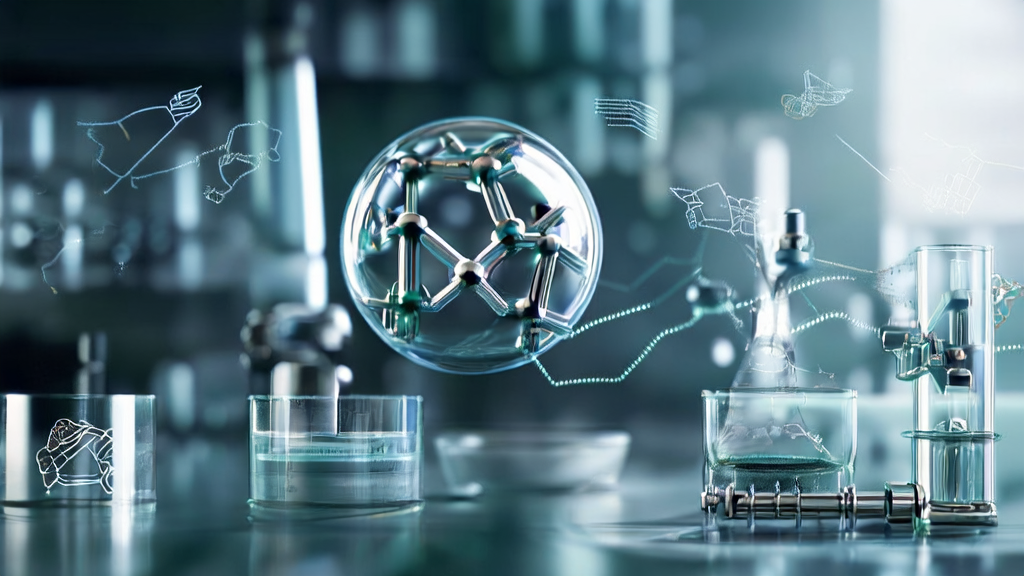 Damian:H₂, or molecular hydrogen, is a colorless, odorless, and highly flammable diatomic gas composed of two hydrogen atoms. It is the lightest and most abundant element in the universe, playing critical roles in energy production, industrial processes, and emerging medical applications. Why Is H₂ Significant? Chemical Simplicity: Consists of two protons and two electrons, forming a stable covalent bond. High Energy Density: Releases significant energy when combusted (142 MJ/kg), making it a potent fuel. Zero Emissions: Produces only water (H₂O) when burned, unlike fossil fuels. Applications of H₂ in the Energy Sector Clean Fuel: Used in fuel cells to generate electricity for vehicles (e.g., hydrogen cars) and industrial power plants. Energy Storage: Stores excess renewable energy (e.g., solar/wind) via electrolysis, addressing intermittency issues. Industrial Decarbonization: Replaces carbon-intensive fuels in steel production ("green steel") and ammonia synthesis. How Is H₂ Produced? Steam Methane Reforming (SMR): Extracts H₂ from natural gas (CH₄ + H₂O → CO + 3H₂), but emits CO₂ (gray hydrogen). Electrolysis: Splits water (H₂O) into H₂ and O₂ using electricity (green hydrogen if powered by renewables). Biomass Gasification: Converts organic waste into H₂ via thermal processes. Photocatalytic Methods: Emerging tech using sunlight to split water (still experimental). Medical Potential of H₂ Antioxidant Therapy: Selectively neutralizes harmful free radicals (e.g., hydroxyl radicals), reducing oxidative stress. Anti-Inflammatory Effects: Shown in studies to alleviate symptoms of arthritis, neurodegenerative diseases, and metabolic disorders. Cancer Research: Preliminary evidence suggests H₂ may enhance radiotherapy efficacy while protecting healthy cells. Delivery Methods: Inhaled as gas, dissolved in water (hydrogen-rich water), or injected in saline solutions. Challenges and Future Outlook Storage/Safety: H₂ is highly flammable and requires compression or liquefaction (-253°C). Cost: Green hydrogen production remains expensive but is declining with tech advancements. Medical Validation: Larger clinical trials are needed to confirm therapeutic benefits.
Damian:H₂, or molecular hydrogen, is a colorless, odorless, and highly flammable diatomic gas composed of two hydrogen atoms. It is the lightest and most abundant element in the universe, playing critical roles in energy production, industrial processes, and emerging medical applications. Why Is H₂ Significant? Chemical Simplicity: Consists of two protons and two electrons, forming a stable covalent bond. High Energy Density: Releases significant energy when combusted (142 MJ/kg), making it a potent fuel. Zero Emissions: Produces only water (H₂O) when burned, unlike fossil fuels. Applications of H₂ in the Energy Sector Clean Fuel: Used in fuel cells to generate electricity for vehicles (e.g., hydrogen cars) and industrial power plants. Energy Storage: Stores excess renewable energy (e.g., solar/wind) via electrolysis, addressing intermittency issues. Industrial Decarbonization: Replaces carbon-intensive fuels in steel production ("green steel") and ammonia synthesis. How Is H₂ Produced? Steam Methane Reforming (SMR): Extracts H₂ from natural gas (CH₄ + H₂O → CO + 3H₂), but emits CO₂ (gray hydrogen). Electrolysis: Splits water (H₂O) into H₂ and O₂ using electricity (green hydrogen if powered by renewables). Biomass Gasification: Converts organic waste into H₂ via thermal processes. Photocatalytic Methods: Emerging tech using sunlight to split water (still experimental). Medical Potential of H₂ Antioxidant Therapy: Selectively neutralizes harmful free radicals (e.g., hydroxyl radicals), reducing oxidative stress. Anti-Inflammatory Effects: Shown in studies to alleviate symptoms of arthritis, neurodegenerative diseases, and metabolic disorders. Cancer Research: Preliminary evidence suggests H₂ may enhance radiotherapy efficacy while protecting healthy cells. Delivery Methods: Inhaled as gas, dissolved in water (hydrogen-rich water), or injected in saline solutions. Challenges and Future Outlook Storage/Safety: H₂ is highly flammable and requires compression or liquefaction (-253°C). Cost: Green hydrogen production remains expensive but is declining with tech advancements. Medical Validation: Larger clinical trials are needed to confirm therapeutic benefits.  MahoganyMyth
MahoganyMythCan someone clearly explain what the chemical symbol of sulfur is and why it matters in the study of Chemistry?
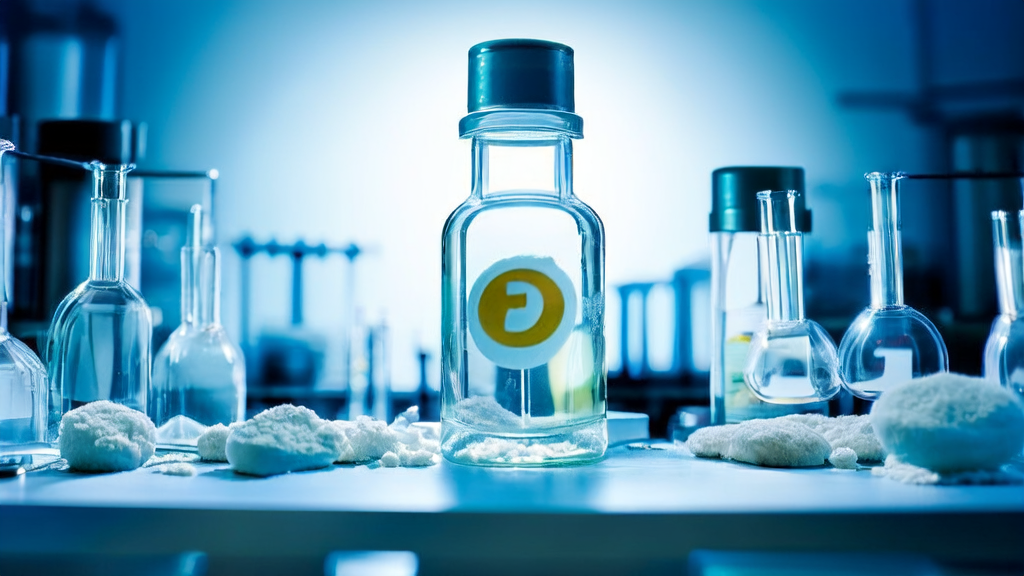 CyclopsRage:Hey! I'm glad you're digging into this. You're right to wonder about sulfur's chemical symbol—it's S. Just like you guessed, it's based on the first letter of its name. Since sulfur doesn't share its first letter with many other common elements (unlike, say, carbon and chlorine), using just S was a simple and clear choice when chemical symbols were standardized. Now, let's talk about why this symbol matters so much in chemistry. First off, it's like a universal shortcut. When chemists write chemical equations or formulas, using S makes everything way more efficient. For example, when sulfur burns in oxygen to form sulfur dioxide, the equation is S + O₂ → SO₂. Imagine having to write "sulfur" and "oxygen" over and over instead of using their symbols! It would be a nightmare, especially for more complex reactions. The symbol S also helps us understand sulfur's properties and its role in reactions. Sulfur is a non - metal, and it's in Group 16 of the periodic table. When you see S in a formula, you can start to make some predictions. Elements in Group 16 tend to have six electrons in their outer shell, which means sulfur usually wants to gain two electrons to become stable. This is why it often forms compounds by bonding with metals that can give up electrons or by sharing electrons with other non - metals. In terms of reactivity, the symbol doesn't directly tell you how reactive sulfur is, but it's a starting point. Once you know it's S, you can look at how it behaves in different reactions. Sulfur can react with many elements. For instance, it combines with hydrogen to form hydrogen sulfide (H₂S), which has that臭鸡蛋 smell. The symbol helps chemists keep track of these reactions and understand the ratios in which elements combine. When it comes to bonding patterns, if you see S in a formula, you know that sulfur can form single, double, or even triple bonds depending on the other elements it's reacting with. For example, in sulfur dioxide (SO₂), sulfur forms double bonds with oxygen. Overall, the symbol S is not just a random letter—it's a key part of the language of chemistry. It helps chemists communicate, understand reactions, and predict the behavior of sulfur and the compounds it forms. So, keep exploring with that symbol in mind, and you'll unlock a ton more about sulfur and the world of chemistry!
CyclopsRage:Hey! I'm glad you're digging into this. You're right to wonder about sulfur's chemical symbol—it's S. Just like you guessed, it's based on the first letter of its name. Since sulfur doesn't share its first letter with many other common elements (unlike, say, carbon and chlorine), using just S was a simple and clear choice when chemical symbols were standardized. Now, let's talk about why this symbol matters so much in chemistry. First off, it's like a universal shortcut. When chemists write chemical equations or formulas, using S makes everything way more efficient. For example, when sulfur burns in oxygen to form sulfur dioxide, the equation is S + O₂ → SO₂. Imagine having to write "sulfur" and "oxygen" over and over instead of using their symbols! It would be a nightmare, especially for more complex reactions. The symbol S also helps us understand sulfur's properties and its role in reactions. Sulfur is a non - metal, and it's in Group 16 of the periodic table. When you see S in a formula, you can start to make some predictions. Elements in Group 16 tend to have six electrons in their outer shell, which means sulfur usually wants to gain two electrons to become stable. This is why it often forms compounds by bonding with metals that can give up electrons or by sharing electrons with other non - metals. In terms of reactivity, the symbol doesn't directly tell you how reactive sulfur is, but it's a starting point. Once you know it's S, you can look at how it behaves in different reactions. Sulfur can react with many elements. For instance, it combines with hydrogen to form hydrogen sulfide (H₂S), which has that臭鸡蛋 smell. The symbol helps chemists keep track of these reactions and understand the ratios in which elements combine. When it comes to bonding patterns, if you see S in a formula, you know that sulfur can form single, double, or even triple bonds depending on the other elements it's reacting with. For example, in sulfur dioxide (SO₂), sulfur forms double bonds with oxygen. Overall, the symbol S is not just a random letter—it's a key part of the language of chemistry. It helps chemists communicate, understand reactions, and predict the behavior of sulfur and the compounds it forms. So, keep exploring with that symbol in mind, and you'll unlock a ton more about sulfur and the world of chemistry!-
 PavelStorm:Hey! I'm stoked you're digging into this tungsten mystery. So, here's the deal: the chemical symbol for tungsten is W, and it definitely doesn't come from its English name. It actually comes from the German word "wolfram," which means "wolf foam." Back in the day, miners thought that tungsten ores seemed to devour tin ores during smelting, kind of like a wolf, hence the name. Over time, when the system of chemical symbols was established, W was chosen to represent tungsten, and it's been that way ever since. Now, let's talk about why this symbol is such a big deal in chemistry. First off, it's a huge time - saver. Imagine writing "tungsten" every single time you're jotting down a chemical reaction or a formula. Using W makes everything way more concise. For example, when tungsten reacts with chlorine to form tungsten hexachloride, the equation is W + 3Cl₂ → WCl₆. It's so much easier to read and write with the symbol, right? The symbol W also gives us a starting point to understand tungsten's properties. Tungsten is a transition metal, and it's in Group 6 of the periodic table. When chemists see W in a formula, they know they're dealing with an element that has some specific characteristics. Its high melting point, which is one of the highest among all metals, is related to its electron configuration and bonding. The symbol helps chemists categorize tungsten and compare it with other elements in the same group, like chromium and molybdenum. They can then predict how tungsten might behave in different chemical situations based on the trends within the group. In chemical equations, the symbol W is key to showing how tungsten interacts with other elements. It tells us the ratio in which tungsten combines with other substances. Since tungsten can form various compounds with different oxidation states, the symbol helps us keep track of these changes. For instance, in some reactions, tungsten might lose different numbers of electrons, and the symbol is there to represent the element consistently throughout these complex processes. Whether it's forming alloys with other metals or reacting with non - metals to create new compounds, the symbol W is the identifier that chemists rely on to communicate and understand what's happening at the atomic level. So, yeah, that little symbol packs a whole lot of meaning and is super important in the world of chemistry!
PavelStorm:Hey! I'm stoked you're digging into this tungsten mystery. So, here's the deal: the chemical symbol for tungsten is W, and it definitely doesn't come from its English name. It actually comes from the German word "wolfram," which means "wolf foam." Back in the day, miners thought that tungsten ores seemed to devour tin ores during smelting, kind of like a wolf, hence the name. Over time, when the system of chemical symbols was established, W was chosen to represent tungsten, and it's been that way ever since. Now, let's talk about why this symbol is such a big deal in chemistry. First off, it's a huge time - saver. Imagine writing "tungsten" every single time you're jotting down a chemical reaction or a formula. Using W makes everything way more concise. For example, when tungsten reacts with chlorine to form tungsten hexachloride, the equation is W + 3Cl₂ → WCl₆. It's so much easier to read and write with the symbol, right? The symbol W also gives us a starting point to understand tungsten's properties. Tungsten is a transition metal, and it's in Group 6 of the periodic table. When chemists see W in a formula, they know they're dealing with an element that has some specific characteristics. Its high melting point, which is one of the highest among all metals, is related to its electron configuration and bonding. The symbol helps chemists categorize tungsten and compare it with other elements in the same group, like chromium and molybdenum. They can then predict how tungsten might behave in different chemical situations based on the trends within the group. In chemical equations, the symbol W is key to showing how tungsten interacts with other elements. It tells us the ratio in which tungsten combines with other substances. Since tungsten can form various compounds with different oxidation states, the symbol helps us keep track of these changes. For instance, in some reactions, tungsten might lose different numbers of electrons, and the symbol is there to represent the element consistently throughout these complex processes. Whether it's forming alloys with other metals or reacting with non - metals to create new compounds, the symbol W is the identifier that chemists rely on to communicate and understand what's happening at the atomic level. So, yeah, that little symbol packs a whole lot of meaning and is super important in the world of chemistry! -
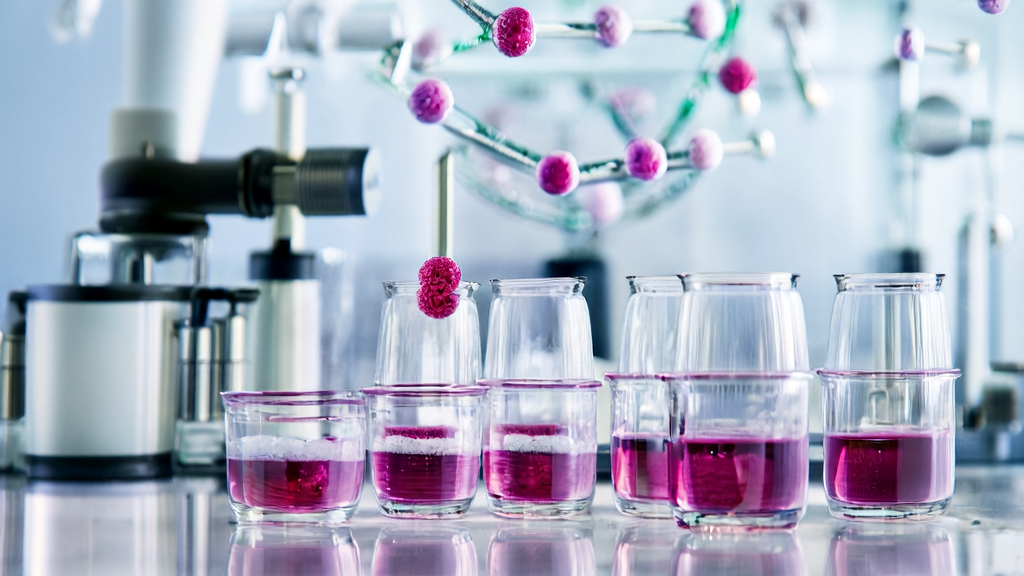 AlkonostWing:Yes, collagen can support hair growth by providing essential amino acids that strengthen hair follicles and improve scalp health. However, its effectiveness depends on factors like diet, genetics, and overall health. How Does Collagen Promote Hair Growth? Collagen, a structural protein, contributes to hair health through several mechanisms: Provides Amino Acids – Collagen is rich in glycine, proline, and hydroxyproline, which are building blocks for keratin, the primary protein in hair. Supports Follicle Structure – It strengthens the dermis (the skin layer where hair roots grow), improving follicle stability and reducing breakage. Antioxidant Protection – Collagen helps combat oxidative stress, which can damage hair follicles and lead to thinning. Improves Scalp Circulation – By maintaining blood vessel integrity, collagen ensures better nutrient delivery to hair follicles. Can Collagen Deficiency Cause Hair Loss? While collagen deficiency alone may not directly cause hair loss, low collagen levels can weaken hair structure, slow growth, and make hair more prone to damage. Age-related collagen decline may contribute to thinning hair over time. What Other Nutrients Support Hair Growth? Besides collagen, key nutrients for healthy hair include: Biotin (Vitamin B7) – Strengthens keratin production. Iron – Prevents anemia-related hair shedding. Zinc – Supports follicle repair and growth. Vitamin D – Stimulates dormant follicles. Omega-3 Fatty Acids – Reduce scalp inflammation and promote shine. How Long Does It Take to See Results? Consistent collagen supplementation (usually 2.5–10g daily) may show effects in 3–6 months, as hair growth is a slow process. Combining collagen with a balanced diet enhances results.
AlkonostWing:Yes, collagen can support hair growth by providing essential amino acids that strengthen hair follicles and improve scalp health. However, its effectiveness depends on factors like diet, genetics, and overall health. How Does Collagen Promote Hair Growth? Collagen, a structural protein, contributes to hair health through several mechanisms: Provides Amino Acids – Collagen is rich in glycine, proline, and hydroxyproline, which are building blocks for keratin, the primary protein in hair. Supports Follicle Structure – It strengthens the dermis (the skin layer where hair roots grow), improving follicle stability and reducing breakage. Antioxidant Protection – Collagen helps combat oxidative stress, which can damage hair follicles and lead to thinning. Improves Scalp Circulation – By maintaining blood vessel integrity, collagen ensures better nutrient delivery to hair follicles. Can Collagen Deficiency Cause Hair Loss? While collagen deficiency alone may not directly cause hair loss, low collagen levels can weaken hair structure, slow growth, and make hair more prone to damage. Age-related collagen decline may contribute to thinning hair over time. What Other Nutrients Support Hair Growth? Besides collagen, key nutrients for healthy hair include: Biotin (Vitamin B7) – Strengthens keratin production. Iron – Prevents anemia-related hair shedding. Zinc – Supports follicle repair and growth. Vitamin D – Stimulates dormant follicles. Omega-3 Fatty Acids – Reduce scalp inflammation and promote shine. How Long Does It Take to See Results? Consistent collagen supplementation (usually 2.5–10g daily) may show effects in 3–6 months, as hair growth is a slow process. Combining collagen with a balanced diet enhances results. -
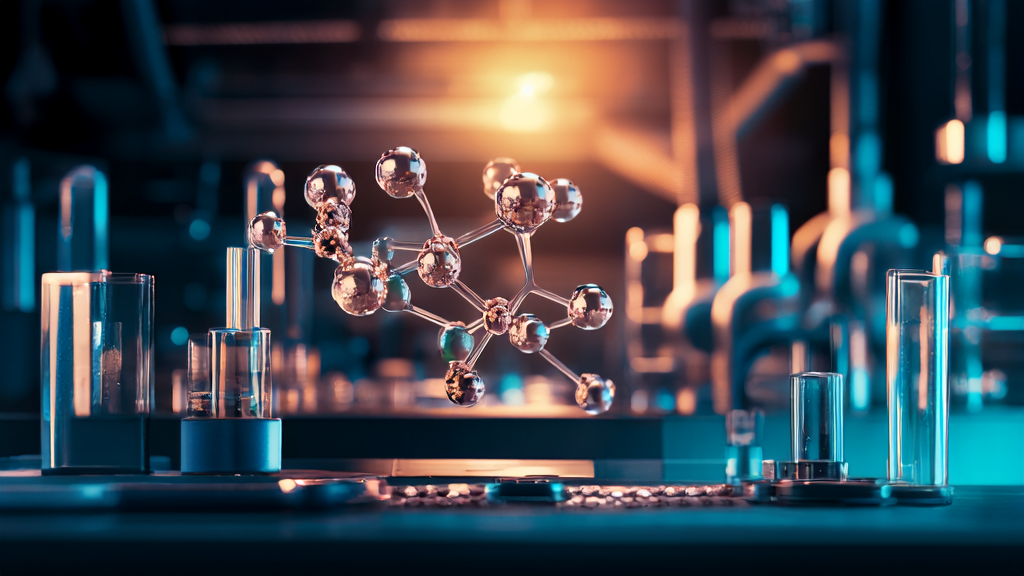 IronWill:High triglycerides are primarily caused by excessive calorie intake (especially sugars and unhealthy fats), sedentary lifestyles, obesity, uncontrolled diabetes, genetic factors, and excessive alcohol consumption. These factors disrupt the body's ability to metabolize fats efficiently, leading to elevated triglyceride levels in the blood. Why Do These Factors Raise Triglycerides? Dietary Habits: Sugars and refined carbs (e.g., soda, white bread) convert into triglycerides when unused for energy. Saturated/trans fats (fried foods, processed snacks) directly increase lipid production in the liver. Physical Inactivity: Lack of exercise reduces the body’s ability to burn triglycerides for energy. Alcohol: Even moderate drinking can overstimulate triglyceride production in the liver. Genetics: Familial hypertriglyceridemia impairs fat metabolism, causing inherited high levels. Can Certain Medications Raise Triglycerides? Yes, some drugs may elevate levels, including: Beta-blockers (for high blood pressure). Corticosteroids (e.g., prednisone). Estrogen-containing medications (birth control pills, hormone therapy). Retinoids (used for acne/skin conditions). Antiretroviral drugs (for HIV). Consult a doctor for alternatives if triglyceride levels spike due to medication. Does Chronic Stress Increase Triglycerides? Indirectly, yes. Stress triggers: Hormonal changes: Cortisol release promotes fat storage and insulin resistance. Unhealthy coping behaviors: Overeating sugary/fatty foods or drinking alcohol. Reduced physical activity, worsening lipid metabolism. Which Diseases Are Linked to High Triglycerides? Metabolic syndrome: A cluster of conditions (high blood pressure, insulin resistance, abdominal obesity) often accompanied by elevated triglycerides. Type 2 diabetes: Insulin resistance disrupts fat breakdown. Hypothyroidism: Low thyroid hormones slow lipid metabolism. Chronic kidney disease: Impaired kidney function affects fat clearance. Liver disease: Non-alcoholic fatty liver disease (NAFLD) is closely tied to high triglycerides. Key Takeaways for Management Test regularly: Monitor levels if you have risk factors. Lifestyle first: Diet and exercise are the most effective ways to lower triglycerides. Medication review: Discuss drug-related triglyceride spikes with your doctor.
IronWill:High triglycerides are primarily caused by excessive calorie intake (especially sugars and unhealthy fats), sedentary lifestyles, obesity, uncontrolled diabetes, genetic factors, and excessive alcohol consumption. These factors disrupt the body's ability to metabolize fats efficiently, leading to elevated triglyceride levels in the blood. Why Do These Factors Raise Triglycerides? Dietary Habits: Sugars and refined carbs (e.g., soda, white bread) convert into triglycerides when unused for energy. Saturated/trans fats (fried foods, processed snacks) directly increase lipid production in the liver. Physical Inactivity: Lack of exercise reduces the body’s ability to burn triglycerides for energy. Alcohol: Even moderate drinking can overstimulate triglyceride production in the liver. Genetics: Familial hypertriglyceridemia impairs fat metabolism, causing inherited high levels. Can Certain Medications Raise Triglycerides? Yes, some drugs may elevate levels, including: Beta-blockers (for high blood pressure). Corticosteroids (e.g., prednisone). Estrogen-containing medications (birth control pills, hormone therapy). Retinoids (used for acne/skin conditions). Antiretroviral drugs (for HIV). Consult a doctor for alternatives if triglyceride levels spike due to medication. Does Chronic Stress Increase Triglycerides? Indirectly, yes. Stress triggers: Hormonal changes: Cortisol release promotes fat storage and insulin resistance. Unhealthy coping behaviors: Overeating sugary/fatty foods or drinking alcohol. Reduced physical activity, worsening lipid metabolism. Which Diseases Are Linked to High Triglycerides? Metabolic syndrome: A cluster of conditions (high blood pressure, insulin resistance, abdominal obesity) often accompanied by elevated triglycerides. Type 2 diabetes: Insulin resistance disrupts fat breakdown. Hypothyroidism: Low thyroid hormones slow lipid metabolism. Chronic kidney disease: Impaired kidney function affects fat clearance. Liver disease: Non-alcoholic fatty liver disease (NAFLD) is closely tied to high triglycerides. Key Takeaways for Management Test regularly: Monitor levels if you have risk factors. Lifestyle first: Diet and exercise are the most effective ways to lower triglycerides. Medication review: Discuss drug-related triglyceride spikes with your doctor.
- 1
- 2
- 3
- 4
- 5
- 6
- 459










 沪ICP备2021018848号-5
沪ICP备2021018848号-5
